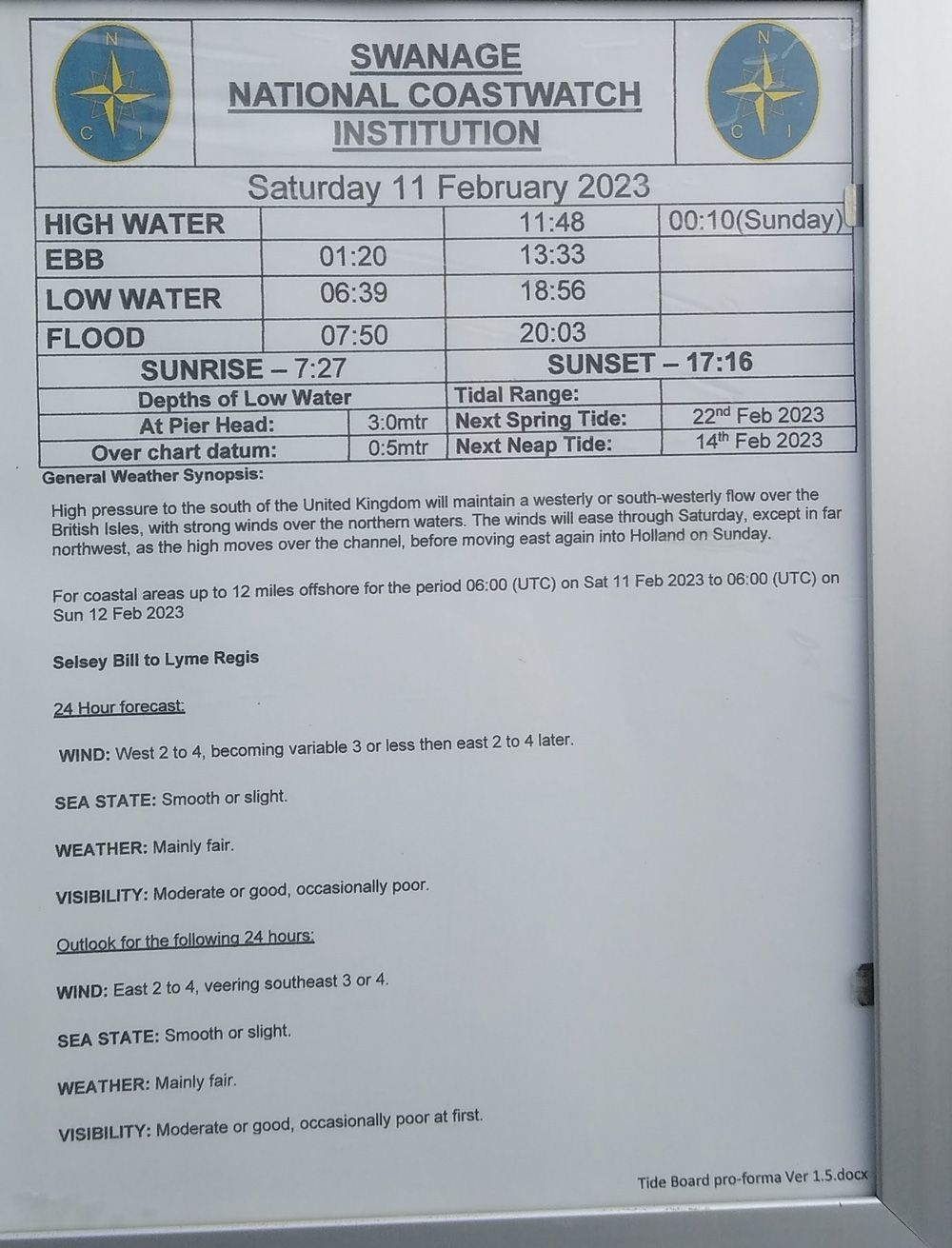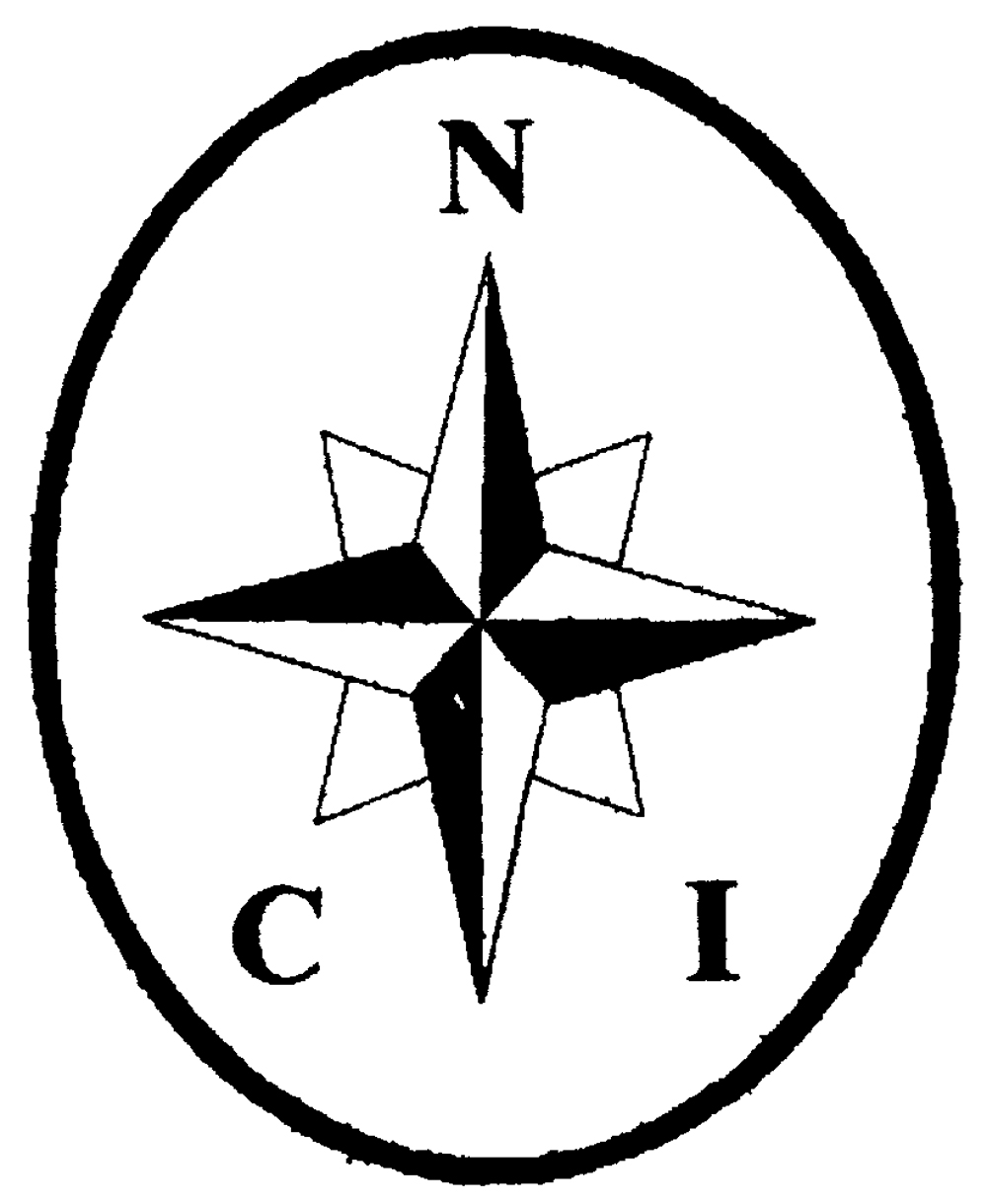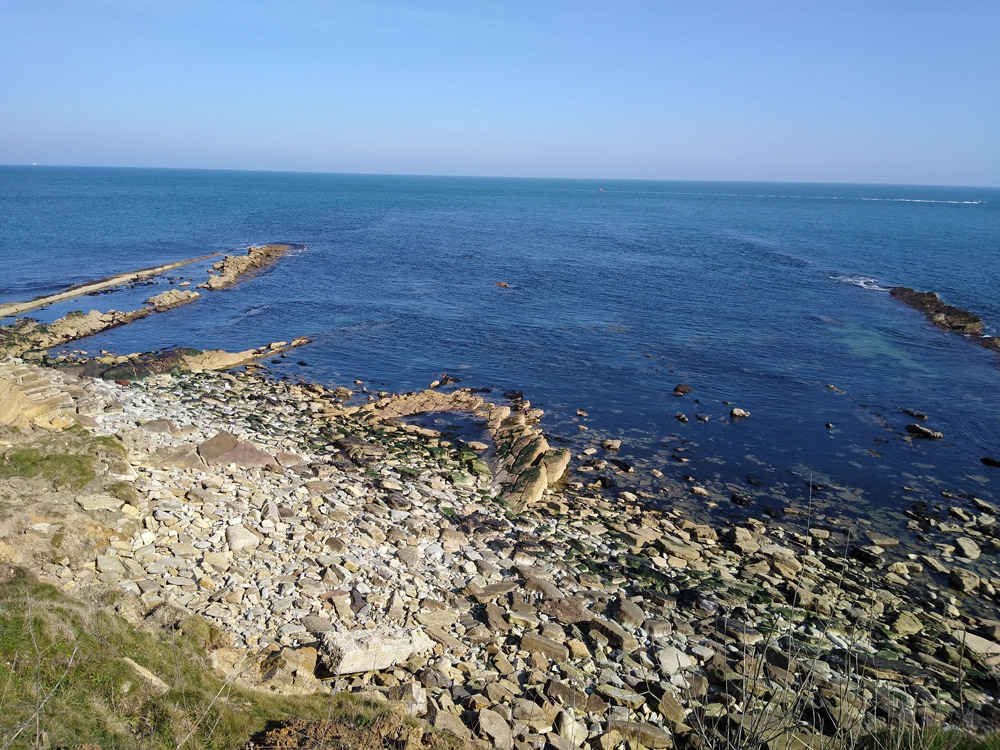By Nick Reed.
OVER the past couple of months, I’ve written about the types of weather forecast we make use of at St Alban’s Head and Swanage. It was really pleasing to have a member of the public drop into the Lookout at Peveril Point and say they’d found them useful and had enjoyed reading them.
Continuing in a similar vein, I thought I’d talk about another subject that watchkeepers need to be aware of – tides. One of the tasks we do before coming on watch is to check the time and state of the day’s tides. It’s not unusual to see visitors heading straight for the noticeboard at Peveril Point to check the day’s tides.
Most people are familiar with the fact we get high and low tides twice a day, but we often get asked to explain the terms ‘spring tide’ and ‘neap tide’. The tides with the biggest difference between high and low water are called springs, and those with the smallest are called neaps. Despite the names, we get spring tides and neap tides twice a month.

The reason we get these differences is all to do with the way the Moon, the Earth and the Sun line up. Tides are caused by a combination of the Earth’s rotation and the gravitational pull of the Moon and the Sun on the Earth. Spring tides happen just after every full and new moon, when the Sun, Moon and Earth are in line. That’s when the Sun and the Moon reinforce each other’s effect, making a bigger total tide. Neap tides occur when the moon is in the first or third quarter – when the Sun, Earth and Moon form a right angle.
The effect the Moon has is partly cancelled out by the effect of the Sun, giving a small total tide. The highest tidal range in the UK – the difference between high and low tide – is in the Bristol Channel and can be as much as 13 metres. However, in our area the tidal range is between half a metre during neap tides increasing to one and a half metres during spring tides.
If you want to know more about the tides, I can recommend an excellent book by William Thomson. It’s called ‘The Book of Tides: A Journey Through the Coastal Waters of Our Island’. I know Swanage Pier has a copy in its shop.
The relationship between the tides and the movements of the Sun, Moon and Earth means that tide times and heights can generally be predicted well in advance. This predictability allows us to produce tide tables. These little booklets are a great aid to planning your day out and they’re normally available in angling shops, bookshops, tourist information shops and a variety of local outlets. As with most things nowadays, you can also get them online.
Having said that they are predictable, the actual height and time of the tides can vary slightly. If we have high-pressure weather systems, tides are generally lower than predicted and, if there is a low-pressure, tides can be higher. Tidal surges caused by mid-ocean storms can also affect both the heights and times of the tides. I remember a case several years ago where a high tide appeared to last for several hours. This was caused by a big storm surge arriving just after the high tide.

Things are further complicated in Purbeck by the presence of double tides. At Peveril Point we get a double high tide while to the west of the St Alban’s Head Lookout, there are double low tides. With the double high tide, the tide begins to go out and then comes back in slightly, before going back out again. With the double low, the tide starts to rise before going out again, for a while.
The reason for these double tides is quite complex and if you ask an ‘expert’ you’ll get a variety of answers. The most common explanation is that it is caused by the existence of the two entrances to the Solent and the Isle of Wight. While these features affect some aspects of the tides, double high –and low waters – occur in the vicinity of what are known as amphidromic or nodal points. These points are where the size – range – of the tide is very small or nil.
Surprisingly, there are about half a dozen locations around the coast where there is little or no tidal range. Poole happens to be close to a nodal point, owing to its position about halfway between Land’s End and the Dover Strait.
Other nodes are found in the North Sea and at either end of the Irish Sea. Complex interactions between tidal movements, the depth of the water and the physical locations of these points create ‘blips’ in the tidal patterns, and it is these that cause the double tide phenomenon. The further you are from a nodal point, the more normal your tides are.
Tides play a major role in anyone using the sea, whether it’s an angler, a fisherman, a sailor or diver. Get the tides right and you have an enjoyable day, get it wrong and you may need to call out the emergency services!








Leave a Reply